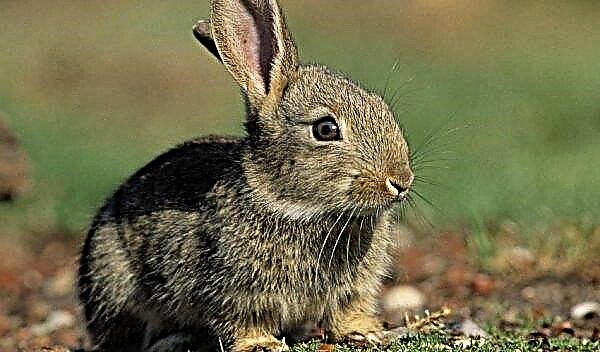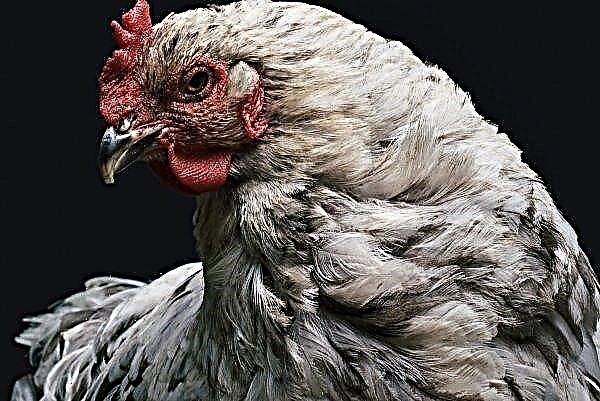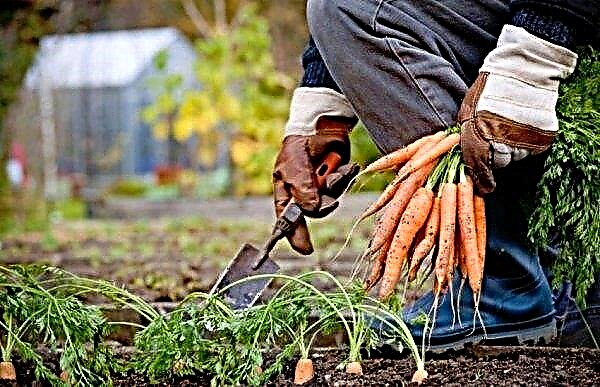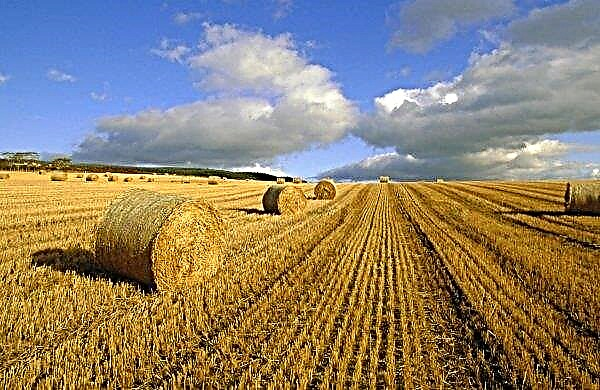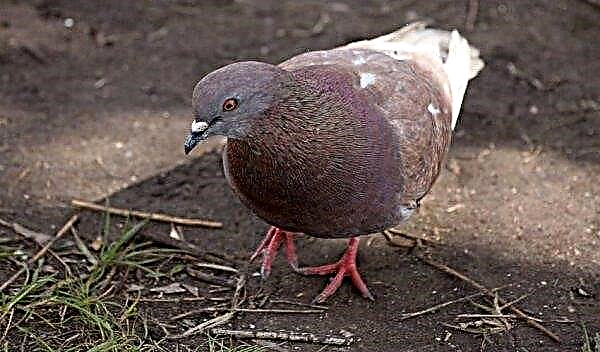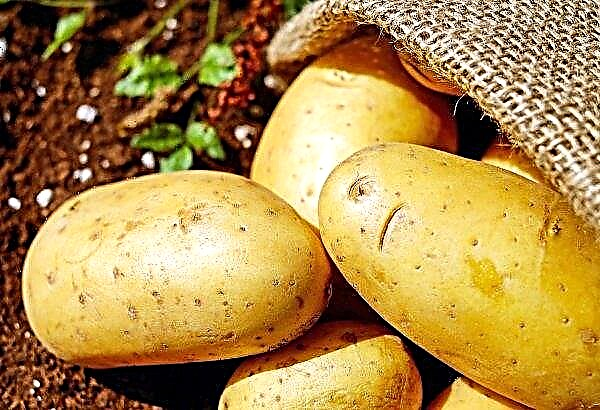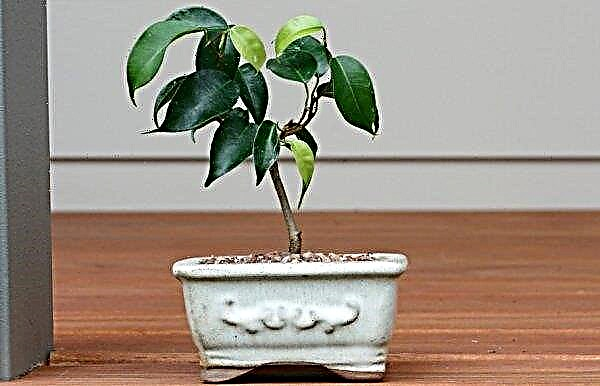Eggplant is universally grown in home gardens along with tomatoes and cucumbers. This vegetable bears fruit well in a warmer climate, so breeders pay attention to breeding varieties that would tolerate cold and weather changes. One of these is Diamond, which will be discussed later.
History of Variety Breeding
Eggplant Diamond is available for cultivation for almost forty years. Initially bred by the breeders of the Donetsk Agricultural Experimental Station (Ukraine). They filed it for registration in the late 1980s. Later, however, all patents and rights to the variety were transferred to the Intersemya seed farm (Russia), in particular to N. M. Nasrullaev. Diamond is distinguished by the fact that it gives excellent harvests even in conditions with a cold climate, namely in the Urals, in Western Siberia, in the Far East.
Did you know? You can not eat overripe eggplants - in this form they contain an increased amount of solanine poison.
Description and characteristic
The eggplant bush Diamond is compact, rarely grows more than half a meter. At the same time strong, with a developed root system. A distinctive feature - during the period of active growth, the bush forms many stepsons, which provides a quick and abundant crop.
The bush cover is thick. The leaves are bright green, medium in size, in the form of an expanded oval, slightly indented at the edges, with streaks of green or purple. The cuttings are colored green, and the whisk and calyx have a purple hue. On the last there are no spiky processes, which provides easy fruit collection.
Fruits in shape resemble a regular cylinder, smooth to the touch. With a width of 3–6 cm, their length is on average 15 cm. The weight of the eggplant is 100–150 g. When the fruit reaches the phase of technical maturity, its color is brownish-brown.
In the phase of biological ripeness, it is painted in dark purple, almost black. The advantage of white-green pulp is that it is dense in consistency and practically does not bite. It contains many small seeds.
Important! Due to the compact bush, the lower fruits of the Diamond may touch the ground. In order to avoid damage, experienced vegetable growers recommend laying straw or other litter under the bush in advance.
Productivity and fruiting
The plant gives the first crop 3-5 months after the first seedlings. Timing depends on climatic conditions, care. If the latter is observed and in good weather, about 1 kg of fruits can be collected on average from 1 m².
Rarely, these indicators are lower, and the productivity record is fixed at 7.5 kg per 1 m². The variety has good transportation qualities, keeping quality. It is collected manually and automatically.
Growing
Those who planted Almaz eggplant on the site, note that they had no problems with caring for the plant. You can plant seeds immediately in the ground, but, as a rule, a lot of them do not emerge.

Therefore, experienced vegetable growers recommend planting a variety in seedlings. Depending on climatic conditions, eggplant can be grown both in greenhouses and on open ground. Seedlings are planted on a site aged 60–70 days.
Seed preparation
Seeds for planting can be prepared independently or purchased in a specialized store. Before planting them in the ground, they must be processed (if the packaging does not indicate that the seeds have already been processed).
Before this, it is recommended to isolate those that are supposed to shoot. To do this, planting material is placed for several hours in a glass of water - you can plant only those seeds that do not float.
You can decontaminate the seed with a solution of hydrogen peroxide (3%). The solution is heated to + 50 ° C and the seeds are lowered into it for several minutes. Also, a weak solution of potassium permanganate is suitable for processing, where they need to be kept for about half an hour.Did you know? In ancient Greece, it was believed that eggplant can cause clouding of the mind, and called them the "rabies apple."
Some growers prefer to sprout a little seed. To do this, they are placed in wet gauze or cotton wool and left for 2-3 days in a warm place. But this procedure is only suitable for seeds prepared independently. If you soak purchased in the store, their protective shell of stimulants and fungicides will be broken.
Soil preparation
Soil for seedlings can be purchased from a specialized store. In this case, it does not require additional processing. You can prepare the earthen mixture yourself, and then disinfect.

To do this, mix in equal parts garden soil, humus, peat and add a glass of ash to the bucket of the mixture. After you should get rid of bacteria and fungi, insects and their eggs.
To do this, use one of the most common methods, namely:
- heat the oven to maximum temperature and leave the earth there for 15 minutes;
- 5 minutes to keep soil in a microwave oven with a heating power of 85 watts;
- the soil is poured with a solution of hydrogen peroxide. The proportion of the solution is 10 ml of peroxide solution (3%) in 0.5 l of water;
- place the soil with the hole below and pour with boiling water or a weak solution of potassium permanganate.
Sowing technology
Seeds can be placed in separate boxes or in large containers. The latter take up less space, so they are used more often. The depth of lowering the seeds should be about 2-3 cm.
If planting is carried out in large containers, then the distance between the seeds should be 2-3 cm and about 5 cm between the rows. After planting, the soil is watered abundantly. To create a more comfortable climate for future seedlings, you can cover the container with film for several days. In the early days, humidity should be high.
Care after planting seeds
Boxes with seeds should be in a warm place, it is optimal to provide them with temperature conditions at the level of +25 ... + 27 ° С. Shoots need daylight, so they need to be lit at least 14 hours a day. If sunlight is not enough, you can use special phytolamps for plants.
Be sure to comply with the irrigation conditions. It should not be excessive, but at first they make sure that the topsoil is moist all the time. When the seedlings grow, they themselves “signal” that they need to be watered - they lower the leaves. If the room is at room temperature, this happens once every 2-3 days. Watering the eggplant sprouts needs to be defended with warm water.

After the seedlings have grown, it can be put on the windowsill or in another convenient place. Small plants are drawn to the light, so in order to avoid their curvature, you need to periodically turn the container with them.
If the seedlings are in a large box, when one or two leaves appear, they must be dived, that is, transplanted into separate containers. This must be done carefully, as the eggplant roots are very sensitive to transplantation and possible damage.
You can feed the seedlings in a few weeks. To do this, use conventional combined fertilizers for vegetable crops. You need to feed every two weeks until landing on a permanent place.
With the onset of heat, seedlings need to be hardened. You can start with a couple of minutes on the balcony on a warm day and finish the whole day in the open air a week before landing. Then there is no doubt that the sprouts will transfer the transplant to a permanent place.Important! If the eggplant seedlings are in a place where there is or is periodically a draft, it may die.
Transplanting
The land in which seedlings are planted must be warmed up. The air temperature during the landing should be at the level of +15 ... + 20 ° С. In a temperate climate, eggplant is planted in open ground in late May - early June.

Seedlings should be placed in the prepared soil: loosened and fertilized. Fertilizers are applied a few weeks before planting and in the fall. You can use complex fertilizer for solanaceous or prepare dressing yourself. To do this, add a bucket of humus or compost mixed with a glass of ash on 1 m² of area.
Landing should be carried out on a warm sunny day. The day before this, the seedlings are abundantly watered. Next, prepare the holes and rows. The distance between the latter should be about half a meter. The holes should be the size of the root system of the plant, with a depth of about 10 cm. The distance between them is about 40 cm.
After the landing site is prepared, each hole should be filled to the brim with warm, settled water. When it is absorbed, the seedling is carefully lowered into it and sprinkled with earth, compacting it without much effort. Next, the beds are watered and covered with grass to preserve moisture.
Check out the features of growing other varieties of eggplant:
Plant care
Eggplant Diamond unpretentious to care. Both heat and cold summer are well tolerated. The fact that they lack moisture can be understood from the drooping leaves. Eggplant bushes need to be watered under the root in the morning. One plant needs up to two liters of water. In hot weather, it is useful to shed a bush well in the evening.

To get a good crop, top dressing is necessary. You can use organic or purchase combined, suitable for tomatoes, eggplant, pepper. The first time they are brought in two weeks after planting and then after the same period. Before fertilizing, you need to loosen the soil and get rid of weeds. Loosening can be carried out as necessary. Mulching will not be superfluous.
Resistance to diseases and pests
The creators of the variety have achieved its resistance to most nightshade diseases. So, Diamond is resistant to columns and mosaics, slightly less - to late blight, top of rot, verticillus and fusarium wilt.
Eggplant of this variety most often affects other Colorado potato beetle pests. In the fight against it, various methods are used - from folk to chemical. To other common parasites, namely to aphids and spider mites, the plant is resistant with proper care.
Harvesting and storage rules
Eggplant fruits are harvested during the period of biological maturity, that is, when they have reached the desired size, color. That is, if the Diamond has a size of about 15 cm and a saturated, almost black color, it can be collected. First, cut the fruits that are closer to the ground. This will not only save them from spoilage, but also make it possible to better grow other fruits, to form new ovaries.

Eggplants are stored raw or frozen, depending on the capabilities. If there is a cool place like a cellar, then the crop can be stored there for up to 3 months. To do this, wipe each vegetable with dry cloth and put it in cardboard boxes.
Only whole fruits need to be selected and not washed. After a few weeks, each eggplant is checked and left with those that have a good appearance. They are transferred with paper and stored further.
Eggplants are stored in the refrigerator for about a month in open plastic or paper bags. Of course, the fruits of Diamond can be stored in the freezer. To do this, they must be washed and cut. After tightly pack in plastic bags or film.
Diamond eggplants are grown by more than one generation of gardeners. All of them are satisfied with their unpretentiousness and excellent taste. There is no doubt that with minimal knowledge, even a beginner gardener will harvest a good crop.

